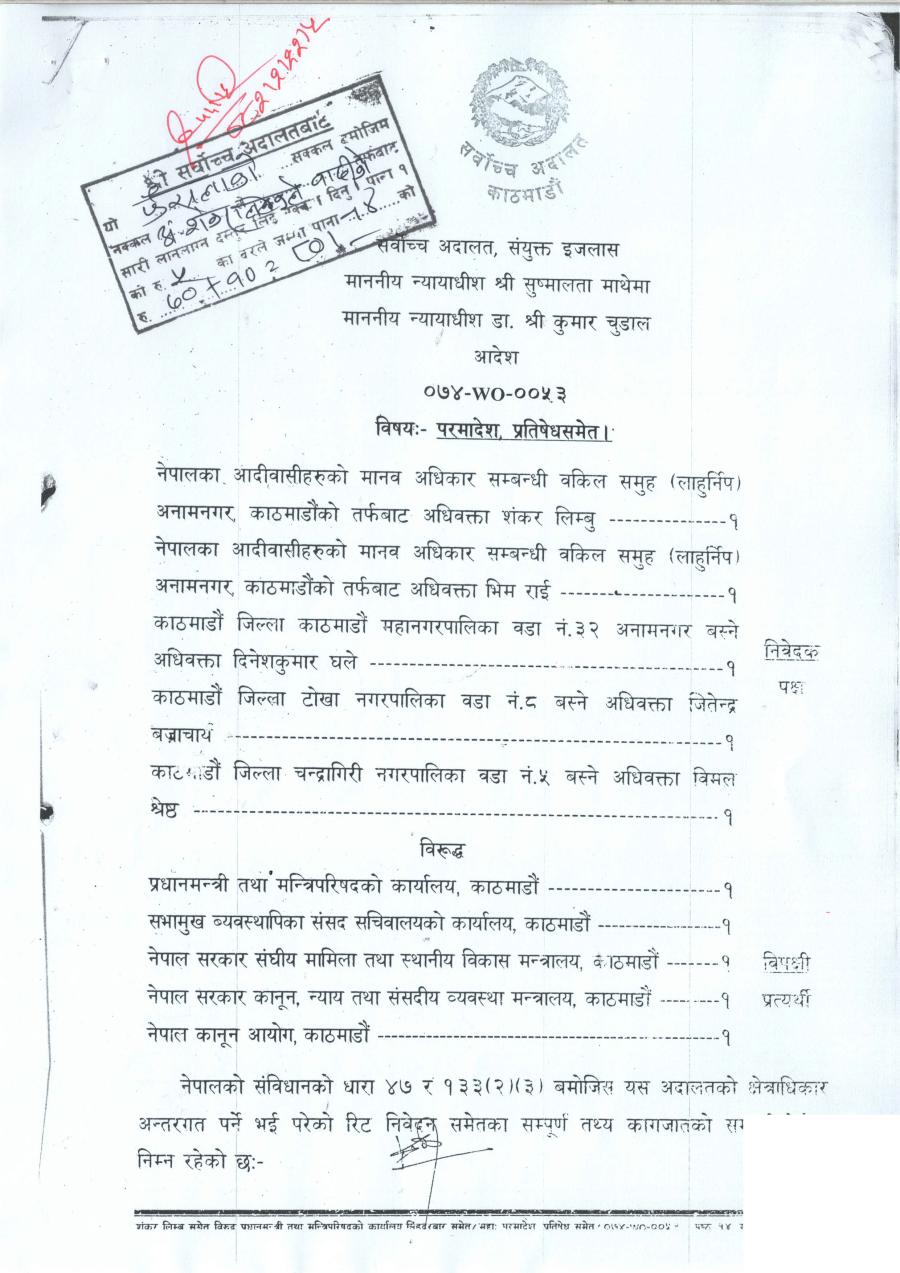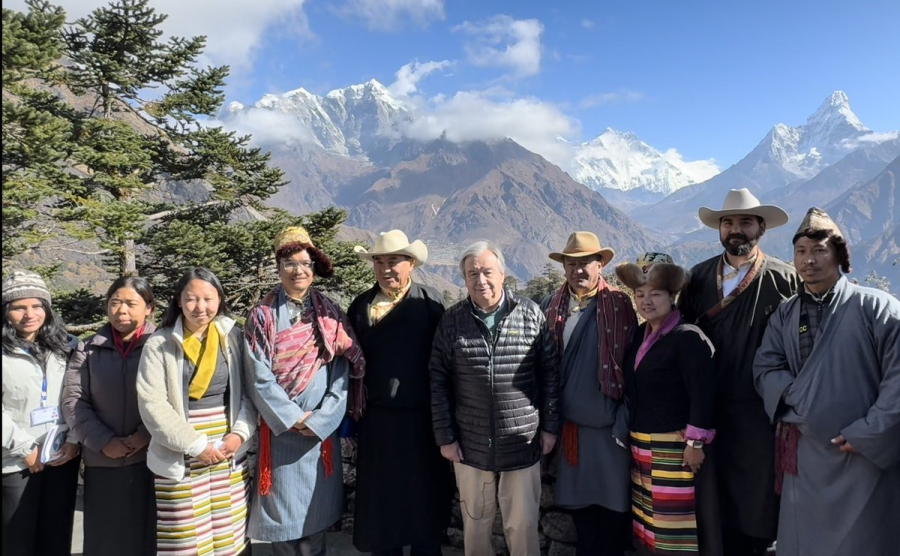The Koĩts-Sunuwar Peoples of Nepal have a deeply rooted Indigenous system of education that emphasizes learning through observation, practice, community socialization, participation in cultural and spiritual rituals, and the transmission of oral teachings. Despite the increasing presence of modern classroom-style education, the Koĩts-Sunuwar have maintained their traditional education methods. These practices remain a cornerstone of their cultural heritage, ensuring essential knowledge and skills are transmitted to future generations. “Our education is not confined to books and classrooms; it is woven into the fabric of our daily lives, passed down from ancestors to descendants. Our stories are our libraries,” says Dr. Lal-Shyäkarelu Rapacha (Sunuwar).
The system is not simply about knowledge transfer; it is vital for safeguarding cultural identity, language, and rituals. Koĩts-Sunuwar learning is deeply interpersonal. These interactions are integral to the community’s education, imparting moral values and lessons on harmonious co-existence with nature. Residing alongside eastern Nepal’s Likhu, Sunkoshi, and Tamakoshi Rivers, the Koĩts-Sunuwar maintain a deep connection to their ancestral homeland. Officially recognized as Sunuwar, the community of nearly 80,000 comprises over 70 sub-clans, all united by their traditional religion, Kirat-Dharma, and their distinct language from the Tibeto-Burman family. Their cultural
heritage is a unique blend of traditions, language, and oral literature protected for millennia.
Nãso, Som Bahadur Sunuwar, adjusts his Chirme (a traditional hat-style ring made of bamboo) in preparation for the Kãs Sil.
The traditional education system of the Koĩts-Sunuwar complements modern education. Shova Sunuwar, Chairperson of the Sunuwar Women’s Society, explains, “We may learn from books, but our true education comes from the whispers of our ancestors, guidance from the parents and grandparents, and the lessons of the land.” She says that Koĩts children learn by observing and imitating daily activities at home and in their communities. From infancy, they are guided on proper behavior, speech, and participation in household chores and socio-cultural rituals. They participate and cooperate in social gatherings, gaining valuable hands-on experience and developing essential skills. In the process, they feel like vital community members and learn informally through everyday interactions.
This upbringing fosters a deep connection to their heritage through a natural process of trial and error. Unlike modern formal education, Koĩts-Sunuwar is intimately connected to nature, agriculture, health, and well being, with knowledge shared equitably among community members. Losing this system would threaten the Koĩts-Sunuwar identity, and reminds us that Indigenous culture is dynamic, emerging organically from daily activities and reflecting the socio-economic factors and ideologies that shape a community’s identity. For Koĩts-Sunuwar, cultural practices, such as those related to food security, are crucial for survival. Their ancestors’ deep understanding of food and its importance highlights the profound connection between Indigenous culture and the natural world.
From birth, Koĩts-Sunuwar are immersed in stories and chants, primarily through the Mukdum (ancient religious and folk literature), performed by Poĩnb and Gyãmi (male and female shamans, respectively), and through the storytelling of their grandparents. These tales form a vibrant tapestry of cultural knowledge that thrives even in the age of technology, with stories now recorded in books and digital formats. Still, the power of oral transmission remains strong. “Our designs are records of our history,” says Puskal Sunuwar, a respected Poĩnb. “They tell stories of our ancestors and our connection to the land.” These designs, found on clothing, walls, and even musical instruments serve as repositories of knowledge akin to modern books. Even as written language has gained prominence, many Koĩts-Sunuwar still rely heavily on oral traditions, recognizing them as a vital part of their cultural identity.
Oral education among the Koĩts-Sunuwar is particularly vibrant during ceremonies and rituals, where stories connect the community to the spirits, their ancestors, and the natural world. These oral traditions are collective endeavors that involve active participation from everyone in the community. Through interactive performances including songs, chants, and epic poetry, the Koĩts-Sunuwar maintain social order and cultural continuity. While classroom-style education has its place, it cannot replicate the depth and communal engagement of the Koĩts-Sunuwar oral tradition. This form of schooling remains vital, ensuring the transmission of knowledge and values from generation to generation; even with the influence of formal education, many Elders continue to rely on Traditional Knowledge.
As globalization threatens local Indigenous knowledge, safeguarding the wisdom contained in cultural practices in written form is crucial. Incorporating Indigenous Traditional Knowledge into formal education and shaping policies to provide learning opportunities for Indigenous Peoples is essential for social justice and cultural continuity. Ceremonies like the Syãndar Sil have long been used to transmit moral values and educational messages and are central to the Koĩts-Sunuwar socio-cultural life. Shamanism, a spiritual tradition preserved for generations, is at the core of Koĩts-Sunuwar culture, and Shamans are revered as healers and spiritual guides. Their knowledge, acquired through inheritance and spiritual instruction, is used in drumming, dancing, and chanting rituals.
Koĩts-Sunuwars’ Shamanic Traditions
The Mukdum is a rich oral tradition that lies at the heart of the Sunuwar people. It is a living entity passed orally from teacher to student during sacred ceremonies, and its narratives often reflect the Sunuwars’ historical hunting lifestyle, explaining their settlements near rivers, caves, and forests. The Sasi Mukdum, conveyed by the Poĩnb and Gyãmi, recounts the origin of the universe, humanity, and the Sunuwar themselves. “The Mukdum is our connection to the beginnings to the stories of creation that shape our identity. [It] is our history, science, and spirituality, all woven together,” reflects Sunuwar. The Megyo Mukdum contains powerful mantras for invoking deities, performing rituals, and healing by summoning nature gods and ancestral goddesses. “The Megyo Mukdum is our medicine,” Sunuwar explains. The Muili Mukdum houses mantras exclusively dedicated to invoking deities. This intricate shamanic system, found across Indigenous cultures, reveals the deep bond between humans and the spiritual world.
One shamanic ceremony, Syãndar Pidar, involves animal sacrifices performed with archery by the Nãso (ritual performer). A lively element of this ceremony is the Kashsil (Porcupine Dance), where the Mukdum is recited rhythmically alongside drums, embodying the Sunuwar belief that the porcupine taught them to identify safe food. The deep animist beliefs of the Koĩts-Sunuwar are reflected in their reverence for nature and the observance of Udhauli and Ubhauli, biannual festivals linked to agricultural cycles.
The Koĩts-Sunuwar community has also relied on customary institutions called the Koĩts-Chuplu to govern various aspects of their lives. This central body features the roles of Mulich (Chief), Ngãwach (advisor), Gauroch (judge), and Dibrung (communication officer), passed down through generations, ensuring continuity of leadership and tradition. As these systems have evolved, the spirit of community-led education persists in homes, fields, the chief’s house, community houses, and during rituals, ensuring a holistic learning experience. Customary institutions like the Koĩts-Chuplu, Mulich, or the Kgãwach (Chief Justice) and Nãso, including Poĩnb and Gyãmi, further guarantee the continuation of Sunuwar culture and knowledge. “Our traditions are vital for cultural continuity, food security, identity, and environmental conservation,” Uttam Kumar Sunuwar says.
Syãndar Sil is a dance performed twice a year that embodies a tradition where knowledge flows from one generation to the next through active participation.
The transition to formal, classroom-based education in Nepal profoundly transformed the Koĩts-Sunuwar and other Indigenous Peoples. Historically, education in Nepal has been tightly regulated. During the Rana regime (1846-1951), education was the privilege of the elite, and an English-based system was used to promote westernization. This period also saw the conscription of Koĩts-Sunuwar youth into the British and Indian armies, further disrupting their traditional way of life. After the Rana regime fell, educational institutions proliferated across Nepal. However, the Panchayat system (1961–1990) imposed a monocultural curriculum centered on Hindu values. This marginalized the diverse Indigenous cultures of Nepal. The emphasis on Nepali as the language of instruction and government further exacerbated these exclusions, leading to poor educational outcomes for many Indigenous children—a trend that persists today.
For the Koĩts-Sunuwar, the dream of Indigenous-led education in their mother tongue remains elusive. Despite the formal acknowledgment of inclusive education, significant obstacles prevent Koĩts-Sunuwar children from accessing quality education that respects and preserves their cultural heritage. While integrating Indigenous education into formal schooling presents practical challenges, initiating a discourse on its incorporation is vital. Bridging the gap between Indigenous knowledge and education systems and modern education is essential to ensure a holistic and inclusive learning experience for future generations.
Top photo: Kãs Sil a dance performed during a Kãs Pidar ancestral ritual in Sabla, Ramechhap, Nepal.
Photos by Uttam Kumar Sunuwar.


